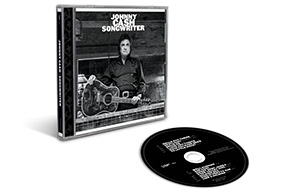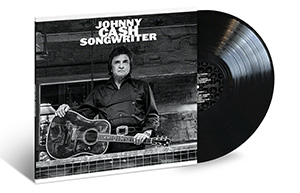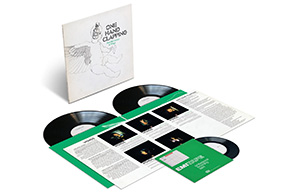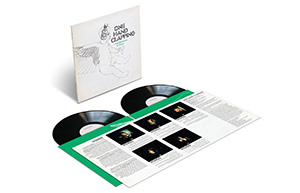Anita O’Day: Celebrating ‘The Jezebel Of Jazz’
One of jazz’s greatest-ever singers, Anita O’Day revolutionized what it meant to be a female vocalist in a male-dominated world.

There was a time when Anita O’Day’s name was synonymous with scandal. Thanks to drug busts and resulting jail time, the jazz singer was dubbed by the US tabloids as the “The Jezebel Of Jazz”, her hepcat lifestyle causing her to be depicted in a negative light. But O’Day was seriously committed to her art. She patented a distinctive, vibrato-less approach to singing that was highly rhythmic and also depended on scat-style improvisation.
Listen to Anita O’Day’s best Verve Records recordings on Apple Music and Spotify.
O’Day was born Anita Belle Colton on 18 October 1919 in Kansas City, Missouri, to Irish parents. The family moved to Chicago during the early 30s and, by the time she was 14, young Anita was already dreaming of a life in show business via her enthusiasm for taking part in dance marathons (a cultural craze at the time) to earn money. By 1936, O’Day was focused on earning a living as a singer and got a gig as a chorus girl. But she had bigger ambitions and started singing with jazz bands. Her big break was joining drummer Gen Krupa’s outfit in 1941, where she scored a hit with ‘Let Me Off Uptown’, a duet with trumpeter Roy Eldridge, backed by Krupa’s men. With her career in the ascendant, O’Day joined Woody Herman’s band, then, in the mid-40s, Stan Kenton’s, before rejoining Krupa in 1945.
A mold-breaker who rejected tradition
During this period, Anita O’Day also played an important role in changing the public perception of female jazz singers (and not just in terms of the press she received for her lifestyle). She was undoubtedly a mold-breaker who, in her early days, rejected the traditional image of the cute-looking, sweet-voiced female vocalist in the big-band era. She didn’t want to be seen as a decorative distraction but wanted to be taken seriously as a musician and perceived as equal to all the men on the bandstand. That prompted her to dispense with formal evening gowns and replace them with a pencil skirt and the same-style jackets that the men in the band wore. Musically, too, she was different, using her voice like an instrument and improvising vocal lines like a horn player.
At the end of World War II, big bands were becoming passé and economically unfeasible. It was the dawn of the solo artist, so O’Day went her own way, forging a career as a standalone, band-less singer. It was tough going at first, compounded by the fact that she was caught in possession of marijuana in 1947 and sentenced to 90 days in jail.
Upon her release, O’Day didn’t have any problems getting work. She returned to sing with both Woody Herman and Stan Kenton before getting a prestigious gig with Count Basie’s band. That was in 1948, but it was during the following decade that she really made her mark.
Effortless vocal agility
Jazz impresario and producer Norman Granz ran two independent labels, Clef and its sister imprint, Norgran, in the first half of the 50s and persuaded O’Day to record for both. She debuted with the album Anita O’Day Sings Jazz, released in 1952 on Norgran, but by 1956 O’Day had inked a contract with Granz’s new venture, Verve Records, which had ostensibly been set up as a vehicle to promote the founder’s protégé, Ella Fitzgerald.
O’Day was at the height of her fame when she appeared at the 1958 Newport Jazz Festival on Rhode Island, which was famously filmed by fashion-photographer turned film director Bert Stern for his documentary Jazz On A Summer’s Day. In her autobiography, O’Day recalled being “as high as a kite” at the time, but her performance, for which she was dressed in a tight black-and-white dress completed by a matching wide-brimmed hat and short white gloves, was utterly mesmerizing. Despite her claims, O’Day seemed completely in control on stage at Newport: assured, charismatic, and demonstrating her deft use of dynamics and effortless vocal agility. Jazz On A Summer’s Day undoubtedly boosted the singer’s career. As she recalled: “The film made me a star singer in Japan and paved the way for international tours.”
Struggles and revival
O’Day cemented her success with a series of fine albums for Verve – including collaborations with saxophonist/clarinetist Jimmy Giuffre, vibraphonist Cal Tjader and soul jazz trio The Three Sounds – and stayed with the label until 1963. After that, however, her career quickly nosedived as heroin addiction took hold of her life. The singer fought with addiction for a total of 15 years, and it almost killed her in 1966, when she suffered an overdose. Her recordings dried up completely until 1975 when she began releasing albums on a regular basis via her own label, Emily, named after her dog. By 1980, O’Day’s career was firmly back on track, and the publication of her autobiography, High Times, Hard Times, a year later, stimulated renewed interest in her life and work.
She recorded four albums in the 90s and then entered another fallow period. After a 13-year hiatus, Anita O’Day, then 87, returned to recording and, in 2006, released an album called Indestructible. Despite its title, it proved to be her final album, bringing the curtain down on what had been a remarkable and truly eventful career. Three years later, interest in O’Day was rekindled when she was the subject of a much-lauded documentary about her life, Anita O’Day: The Life Of A Jazz Singer, which premiered at New York’s prestigious Tribeca film festival.
Having estimated that she spent $400,000 on heroin at the height of her addiction, it’s a miracle that O’Day lived as long as she did (many other jazz musicians weren’t so lucky, including fellow singer and heroin addict Billie Holiday). While the seamy side of her personal life, as depicted in her candid, warts’n’all memoir, may have raised her profile in the eyes of the wider public and those unfamiliar with her recordings, it’s O’Day’s music that we should really focus on. She was a vocal genius who took the art of jazz singing to new levels in the 50s, and her legacy of recordings places her in the pantheon of great jazz singers, alongside the likes of Ella Fitzgerald, Sarah Vaughan and Billie Holiday.
Looking for more? Discover the best jazz singers of all time.










